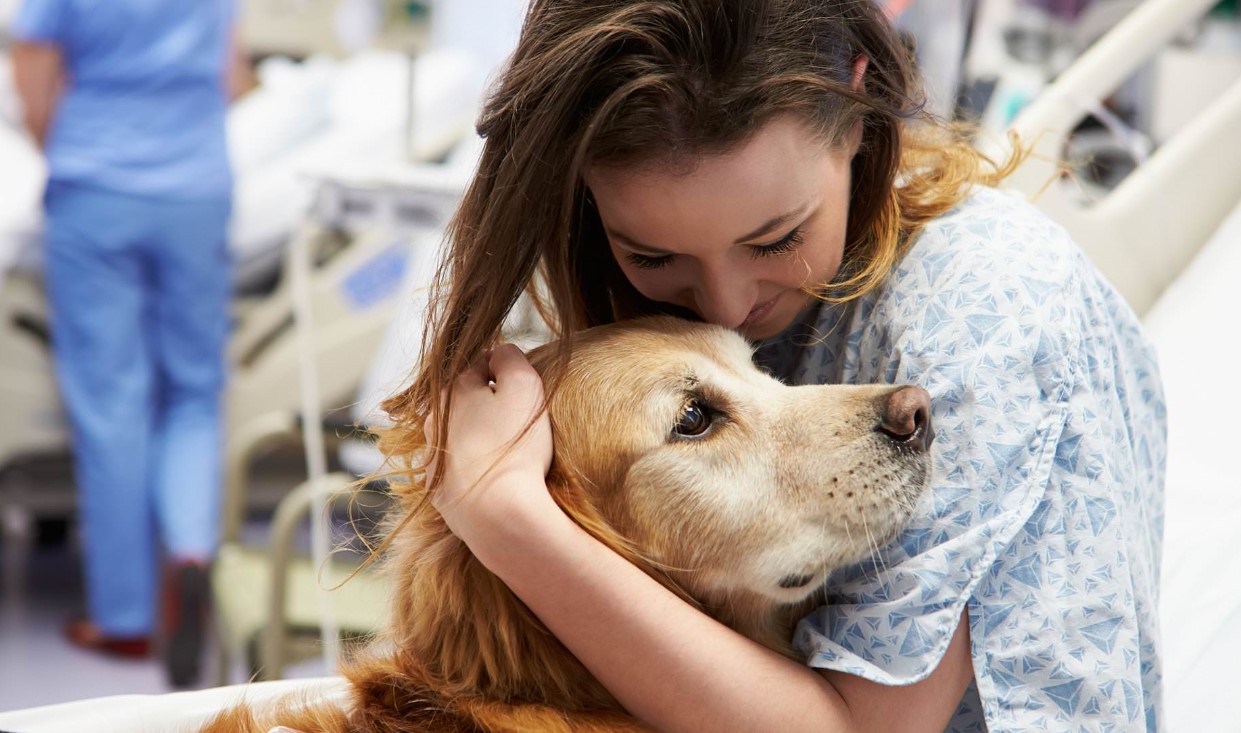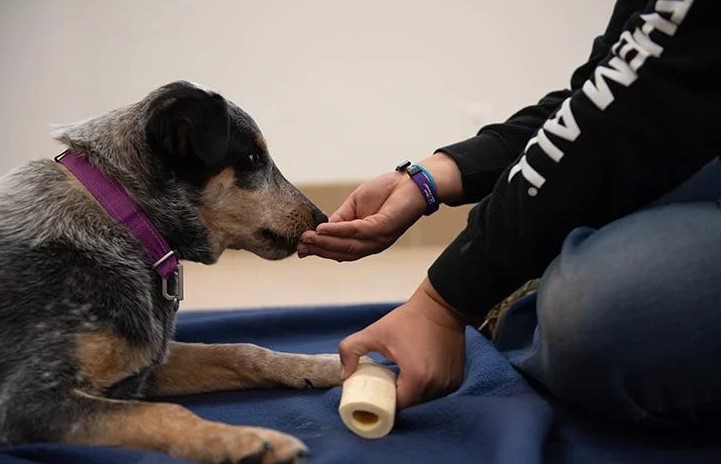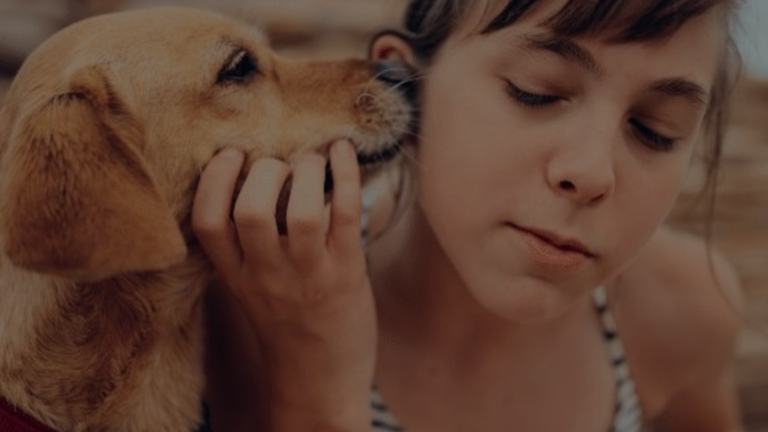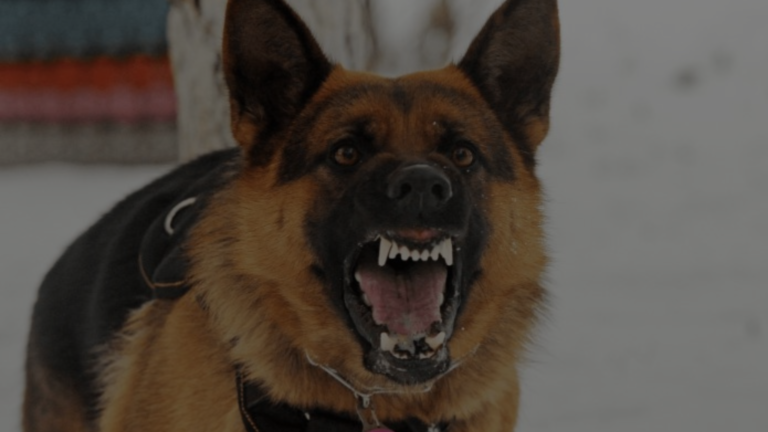Dogs are known for their unconditional love, loyalty, and unique ways of expressing themselves. As a pet enthusiast and a passionate dog lover, I’m excited to delve into the intriguing topic of “Why Does My Dog Talk Back to Me.” We’ll explore the reasons behind your furry friend’s chatty behavior and how to better understand what they’re trying to convey. So, let’s embark on this journey into the world of canine communication.

Canine Communication 101
Understanding your dog’s behavior starts with understanding the basics of canine communication. Dogs primarily express themselves through body language, vocalizations, and a combination of the two. In this article, we will focus on voice, or in simpler terms, “talking back”.
Woofs and Barks
When your dog responds to you with woofs and barks, it’s their way of communicating with you. Dogs bark for various reasons:

- Attention: Dogs may bark when they want your attention. It’s their way of saying, “Hey, look at me!”
- Excitement: Happy and playful dogs often bark out of excitement. They’re saying, “I’m so thrilled right now!”
- Protection: Dogs may bark to alert you of potential threats. They’re essentially saying, “Danger, beware!”
- Loneliness: If your dog barks when you leave, they’re expressing loneliness and separation anxiety.
- Fear: Barking can also be a sign of fear. Your dog is telling you, “I’m scared.”
Whines and Whimpers
Whining and whimpering are often signs of distress. Your dog may do this to express discomfort, fear, or even pain. When your dog whines, it’s like saying, “I need help” or “I’m not feeling well.”
Growls and Snarls
Growling and snarling are more assertive vocalizations. Dogs do this when they feel threatened, angry, or agitated. They’re warning you, “Back off” or “I’m not happy.”
Why Dogs Talk Back
Now that we’ve covered the types of vocalizations, let’s dive into the reasons why your dog talks back to you.

Affection and Playfulness
When your dog talks playfully, it’s a sign of affection and eagerness to engage with you. They are saying, “Let’s have some fun together!” These moments of interaction strengthen the bond between you and your beloved friend.
Seeking Attention
Dogs love attention, and sometimes, talking back is their way of seeking it. When they want to play, cuddle, or simply be close to you, they will vocalize to get your attention. In dog language, this is like saying, “I want to be with you.”
Expressing Displeasure
Just like humans, dogs have temperaments. If your dog is unhappy about something – maybe they don’t like their leash, bath time, or a particular visitor – they may talk back to express their displeasure. It’s their way of saying, “I don’t like it.”
Communication of Needs
Dogs also talk to communicate their needs. If they are hungry, thirsty, or need to go outside, they will let you know. This communication is essential to understand their well-being and their needs.

Social Interaction
Dogs are social animals, and talking back is a part of their social interaction. They mimic our vocal tones and rhythms to connect with us. When they “talk,” they’re participating in the conversation, albeit in their own way.
Deciphering Your Dog’s Language
Now that you understand why your dog talks back, let’s discuss how to decipher their language effectively.
Pay Attention to Context
The key to understanding your dog’s vocalizations is context. Consider what’s happening around them. Are they excited, anxious, or relaxed? Context provides vital clues.

Observe Body Language
Dogs’ body language complements their vocalizations. Watch for cues like tail wagging, ear position, and overall posture. These visual signals help you understand the complete message.
Consistency is Key
Consistency in your dog’s vocalizations is another indicator. If they repeatedly talk back in a particular situation, it’s likely related to that context.
Respond Appropriately
When your dog talks back, respond appropriately. If they seek attention, engage with them. If they’re distressed, comfort them. Your response reinforces their behavior.
Training and Positive Reinforcement
For undesirable talking back, training is essential. Use positive reinforcement to teach your dog when it’s appropriate to vocalize and when to be quiet.

Conclusion
Finally, dogs talk for a variety of reasons, and this is an important aspect of their communication. By paying attention to their tone of voice, body language, and context, you can better understand your furry friend’s needs and feelings. Remember, communication is a two-way street, and building a strong bond with your dog involves listening to their language as well as speaking.
Resources & References
For more in-depth information on dog communication and training, you can explore these resources:
Recommended Articles
Recommended Video
And now, as a bonus, here’s a YouTube video that complements this topic:
5 Conversations with My Dog Talking Back to Me
In this video, you’ll witness real-life conversations between dogs and their owners, where the dogs talk back in their unique ways. It’s a heartwarming and entertaining exploration of the bond between humans and their four-legged companions. Enjoy the delightful interactions!
That wraps up our discussion on why dogs talk back to their owners. I hope you’ve gained valuable insights into this fascinating aspect of canine behavior. Happy communicating with your furry friend!
FAQs – Why Does My Dog Talk Back to Me
Why does my dog talk back to me?
There are a few reasons why your dog may talk back to you. They could be trying to communicate their needs, get your attention, or even just express their excitement.
What should I do if my dog talks back to me?
The best thing to do is to remain calm and assertive. Don’t yell at your dog or punish them for talking back. Instead, try to figure out what they are trying to communicate and respond accordingly.
Is it bad if my dog talks back to me?
Not necessarily. Some people see their dog talking back as a sign of intelligence and affection. However, if your dog is talking back in a way that is aggressive or disruptive, it may be a sign of a problem.
How can I teach my dog to stop talking back to me?
If you want to teach your dog to stop talking back, you need to be consistent with your training. Every time your dog talks back, ignore them or give them a negative cue, such as “no” or “quiet.”
What if my dog doesn’t stop talking back after training?
If your dog doesn’t stop talking back after training, it may be a sign of a medical problem. Talk to your veterinarian to rule out any underlying health issues.







